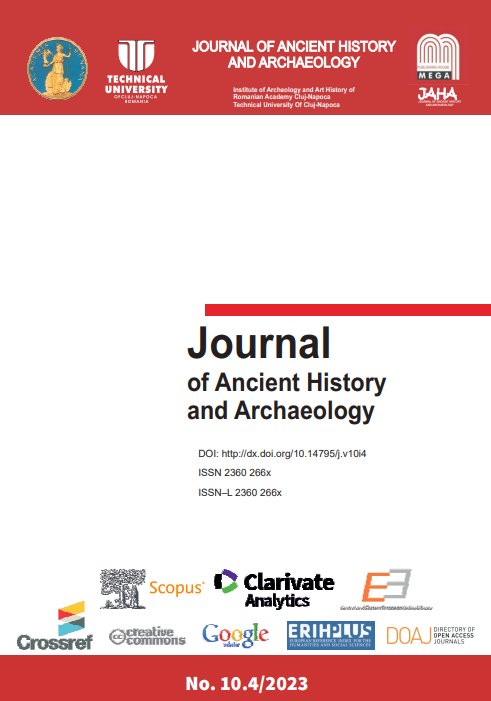STATISTICAL PATTERN ANALYSIS OF ROMAN VILLAE IN ANDALUSIA FROM QUALITATIVE MULTISTATE VARIABLES
STATISTICAL PATTERN ANALYSIS OF ROMAN VILLAE IN ANDALUSIA FROM QUALITATIVE MULTISTATE VARIABLES
Author(s): Francisco Javier Esquivel, José Antonio ESQUIVEL, Pablo RUÍZ-MONTES, Isabel Fernández-GarcíaSubject(s): History, Archaeology, Comparative history, Ancient World
Published by: Editura Mega Print SRL
Keywords: correspondence analysis; cluster analysis; qualitative; roman villae;
Summary/Abstract: The political and cultural domination of Rome over the Iberian Peninsula and, more specifically, over its southern half (later the province of Baetica (Andalusia, Spain) produced a prolonged process of Romanisation in all areas between the 1st century BC and the 5th century AD. During these years a large number of villae were erected in Andalusia, mainly in the region near the Guadalquivir river valley. However, the archaeological information available is very scattered and sometimes quite heterogeneous. This work has been carried out based on a recently published compilation, in collaboration with researchers from Andalusian universities, which contains the state of art of the Roman villae in Andalusia. This article focuses exclusively on the villae that show evidence of the production of pottery. The pottery associated with these villae provide geographical information, chronological information about the period of use, typology of material found, and functionality of material. With this information, a database has been developed containing only the villae with associated pottery factories. Subsequently, different statistical analyses have been carried out, including both univariate and bivariate as well as multivariate analyses applied to qualitative multistate variables. The results obtained have allowed us to characterize the villae that show evidence of pottery production, to quantify the information in order to highlight the underlying trends in the data, to obtain a statistical classification in several groups, and to characterize the resulting patterns.The political and cultural domination of Rome over the Iberian Peninsula and, more specifically, over its southern half (later the province of Baetica (Andalusia, Spain) produced a prolonged process of Romanisation in all areas between the 1st century BC and the 5th century AD. During these years a large number of villae were erected in Andalusia, mainly in the region near the Guadalquivir river valley. However, the archaeological information available is very scattered and sometimes quite heterogeneousThe political and cultural domination of Rome over the Iberian Peninsula and, more specifically, over its southern half (later the province of Baetica (Andalusia, Spain) produced a prolonged process of Romanisation in all areas between the 1st century BC and the 5th century AD. During these years a large number of villae were erected in Andalusia, mainly in the region near the Guadalquivir river valley. However, the archaeological information available is very scattered and sometimes quite heterogeneous.This work has been carried out based on a recently published compilation, in collaboration with researchers from Andalusian universities, which contains the state of art of the Roman villae in Andalusia. This article focuses exclusively on the villae that show evidence of the production of pottery. The pottery associated with these villae provide geographical information, chronological information about the period of use, typology of material found, and functionality of material. With this information, a database has been developed containing only the villae with associated pottery factories. Subsequently, different statistical analyses have been carried out, including both univariate and bivariate as well as multivariate analyses applied to qualitative multistate variables. The results obtained have allowed us to characterize the villae that show evidence of pottery production, to quantify the information in order to highlight the underlying trends in the data, to obtain a statistical classification in several groups, and to characterize the resulting patterns.The political and cultural domination of Rome over the Iberian Peninsula and, more specifically, over its southern half (later the province of Baetica (Andalusia, Spain) produced a prolonged process of Romanisation in all areas between the 1st century BC and the 5th century AD. During these years a large number of villae were erected in Andalusia, mainly in the region near the Guadalquivir river valley. However, the archaeological information available is very scattered and sometimes quite heterogeneous
Journal: Journal of Ancient History and Archaeology
- Issue Year: 10/2023
- Issue No: 4
- Page Range: 55-63
- Page Count: 8
- Language: English

